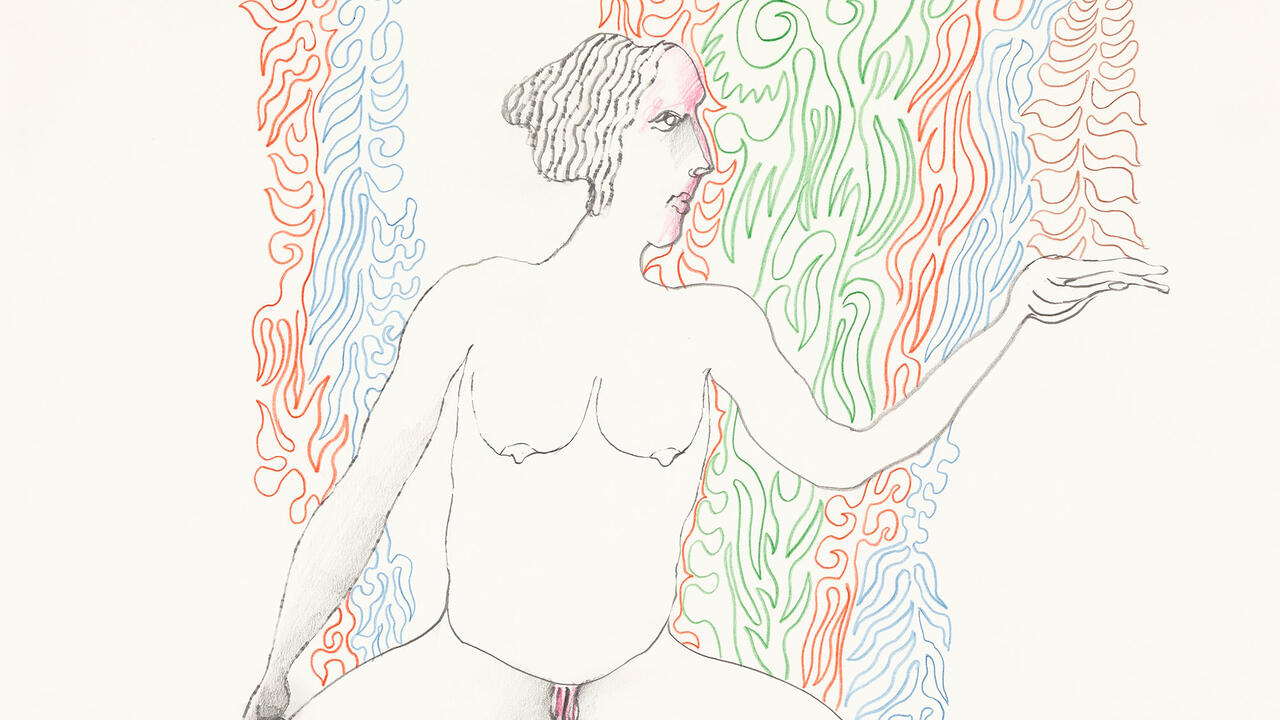Pierre Bismuth
Kunsthalle Wien, Vienna, Austria
Kunsthalle Wien, Vienna, Austria

‘Everybody is an artist but only the artist knows it’, Pierre Bismuth once declared. Across the facade of the Kunsthalle Wien hangs a large banner warning visitors that, at regular intervals throughout the course of ‘Der Kurator, der Anwalt und der Psychoanalytiker’ (The Curator, the Lawyer and the Psychoanalyst), the French artist’s retrospective, a woman will walk through the courtyard carrying a bag, her passage timed precisely to coincide with a similarly unspectacular happening inside the museum. No times are given, so, for all I know, the routine is about to begin. I have a pathological fear of participating in art performances in even the most peripheral way, and am immediately set on edge. Is the woman with a bag standing beside me an actor? Can she tell I’m thinking this? Does behaving as if she might be an actor make me an actor, of sorts? Am I, despite myself, participating in art?
This anxiety-inducing billboard is one of three new ‘Performances’ installed around Vienna for the duration of Bismuth’s show, and it soon becomes apparent that their descriptions do not correspond to a scheduled programme of events. (It would be tricky to coordinate, for instance, a middle-aged man ordering a doner kebab on Mariahilfer Straße with a woman in a neighbouring gift shop overhearing a conversation about Bismuth, every two hours for six weeks.) They are instead prompts, playing on our faith in the authority of the written word not only to describe events but also to bring them into being. Such curiously circular logic characterizes this engaging survey of Bismuth’s entertainingly disrespectful career.
As is apparent from the earliest work on show, in which a generic name is painted in and onto a monochrome colour (Jacques, 1988), Bismuth has always toyed with the methods by which ideas gain the status of artworks. To provide new perspectives on these processes, the artist chose to hand responsibility for the selection, presentation and interpretation of this retrospective to those three familiar arbiters of contemporary art: a curator, a lawyer and a psychoanalyst.
Musing over one of the prints in Bismuth’s series ‘Following the right hand of …’ (1999–ongoing), in which the artist traces the movements of an actor’s hand as he or she gesticulates on film, the lawyer tells us, via wall text, that, ‘as pastiche, parody or caricature’, this work of art would benefit from an exception to article L122-5 of the French intellectual property code. The curator, using the language of her profession, informs us that ‘it is a performative piece based on an automatic gesture’. Here are two definitions of an artwork, neither of which is exhaustive. Such commentaries add an extra gloss to works such as The Jungle Book Project (2002) – Bismuth’s nightmarish, polyglot re-dubbing of the Disney film – that are already preoccupied with how the act of translation separates what is stated from what is understood.
Bismuth, sometimes described as a post-conceptualist, has accused conceptual art of participating in ‘the shift of economic value from the object produced by the artist to the name of the artist’, creating a system in which ‘the name of the artist is the ultimate fetish object’. Here, Bismuth has spray-painted the upper reaches of the Kunsthalle’s walls with names including Matthew Barney, Liam Gillick and Christian Jankowski. Beneath them, as part of the series ‘Certificates of Authenticity’ (2001), is a typeset statement signed and dated by John Baldessari confirming that ‘this is not an original work by John Baldessari’. We might read this logical absurdity simply as a rueful protest against the commodification of art. But to do so would be to ignore Bismuth’s insistence that paradoxes are not obstacles to thought but stimuli for it; art consists not in providing an answer to the question of why an object, idea or event is meaningful – be it couched in curatorial, legal or psychoanalytical terms – but in attempting to find one.
























